
In the Battle of Monterrey during the Mexican–American War, General Pedro de Ampudia and the Mexican Army of the North was defeated by the Army of Occupation, a force of United States Regulars, Volunteers, and Texas Rangers under the command of General Zachary Taylor.
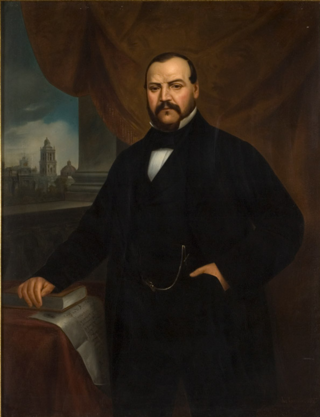
Ignacio Gregorio Comonfort de los Ríos, known as Ignacio Comonfort, was a Mexican politician and soldier who was also president during La Reforma.

Miguel Gregorio de la Luz Atenógenes Miramón y Tarelo, known as Miguel Miramón, was a Mexican conservative general who disputed the Mexican presidency with Benito Juarez at the age of twenty seven during the Reform War, serving between February 1859 and December 1860. He was the first Mexican president to be born after the Mexican War of Independence.

Félix María Zuloaga Trillo (1813–1898) was a Mexican conservative general and politician who played a key role in the outbreak of the Reform War in early 1860, a war which would see him elevated to the presidency of the nation. President Zuloaga was unrecognized by and fought against the liberals supporters of President Benito Juarez.
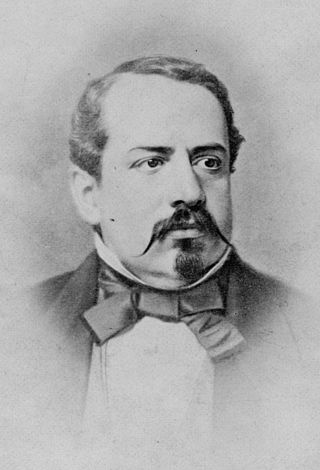
Manuel Robles Pezuela was a military engineer, military commander, and eventually interim president of Mexico during a civil war, the War of Reform, being waged between conservatives and liberals, in which he served as president of the Conservatives, in opposition to President Benito Juarez, head of the Liberals.
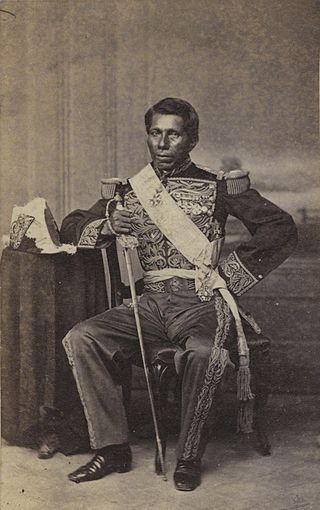
José Tomás de la Luz Mejía Camacho, better known as Tomás Mejía, was a Mexican soldier of Otomi background, who consistently sided with the Conservative Party throughout its nineteenth century conflicts with the Liberals.

The Mexican Democratic Party was a Catholic social conservative political party in Mexico that existed between 1979 and 1997. At its height in 1982, the party had over 500,000 active voters and 12 seats in the Mexican Chamber of Deputies.
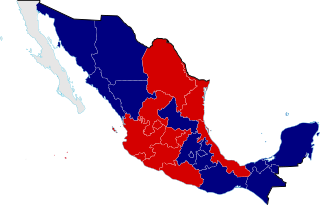
The Reform War, or War of Reform, also known as the Three Years' War, and the Mexican Civil War, was a complex civil conflict in Mexico fought between Mexican liberals and conservatives with regional variations over the promulgation of Constitution of 1857. It has been called the "worst civil war to hit Mexico between the War of Independence of 1810–21 and the Revolution of 1910–20". Following the liberals' overthrow of the dictatorship of conservative Antonio López de Santa Anna, liberals passed a series of laws codifying their political program. These laws were incorporated into the new constitution. It aimed to limit the political power of the executive branch, as well as the political, economic, and cultural power of the Catholic Church. Specific measures were the expropriation of Church property; separation of church and state; reduction of the power of the Mexican Army by elimination of their special privileges; strengthening the secular state through public education; and measures to develop the nation economically.

Apaseo el Grande is a city and municipality located in Guanajuato, Mexico. The municipality covers 415.26 square kilometres (160 sq mi). It is bordered on the north by Comonfort and San Miguel de Allende, on the east by Querétaro in the State of Querétaro, on the south by Apaseo el Alto, and on the west by Celaya. The municipality had a population of 85,319 inhabitants according to the 2010 census.

José Santos Degollado Sánchez was a Mexican Liberal politician and military leader. He was raised by a priest in Michoacán and worked twenty years in the cathedral in Morelia. He became a Federalist in 1836 and entered politics in 1845 when he was elected to the Michoacán legislature in 1845. He replaced his close associate Melchor Ocampo as governor of Michoacán 27 March - 6 July 1848. He joined the Revolution of Ayutla. He became governor of Jalisco when the liberals successfully ousted Antonio López de Santa Anna. As with a number of rising Liberals, Degollado was not formally trained as a soldier, but gained military experience in the Revolution of Ayutla. He later fought for Benito Juárez's government. During Benito Juárez's presidency he served as Secretary of War and Navy and as Secretary of External Affairs. Degollado was a close friend of Guillermo Prieto and of Melchor Ocampo and fought by his side in many battles. Degollado was a resilient military leader, experiencing defeat after defeat in the Reform War that pitted the constitutional liberal government of Juárez against the conservatives. The army fielded by the conservatives was larger and better trained than the liberals' forces, but the liberals managed to achieve a stalemate for over two years and in the end triumphed. The liberal victory was not achieved by Degollado, who was in disgrace at the end of the war. Degollado was known as the "hero of defeats" for his ability to raise yet another army after yet another defeat. An experienced general who joined the liberal cause, General López Uraga, gave President Juárez a scathing assessment of the liberal army and Degollados's command of it. He had given everything he could to achieve a liberal victory, but his record of defeats meant his men were demoralized although continued to be loyal to him.
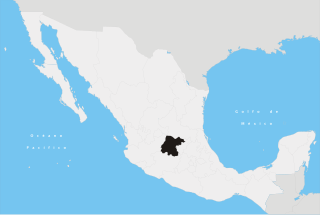
Valtierrilla is a village in the Mexican state of Guanajuato, near the city of Salamanca, with a population of 13,200 in 2007. It is considered the world capital of the fruit-bearing cactus known as nopal.
The Liberal Party was a loosely organised political party in Mexico from 1822 to 1911. Strongly influenced by French Revolutionary thought, and the republican institutions of the United States, it championed the principles of 19th-century liberalism, and promoted republicanism, federalism, and anti-clericalism. They were opposed by, and fought several civil wars against, the Conservative Party.
Events in the year 1860 in Mexico. Throughout 1860, Mexico continued a civil war, known as the Mexican Civil War or the Reform War. Two political movements fought for civil control: a reform government led by Benito Juárez and a conservative government led by Miguel Miramón. By 1860, the liberal government under Benito Juárez had emerged victorious in this three-year civil war.

The Battle of Silao took place on 10 August 1860 in the vicinity of Silao in Guanajuato state, Mexico, between elements of the liberal army, under the command of General Jesús González Ortega and Ignacio Zaragoza with a force of 8,000 men and elements of the conservative army commanded General Miguel Miramón by commanding an army of 3,282 during the War of Reform. The battle was a liberal victory. General Miramón was almost captured, but escaped in the disorder caused by the Republican artillery, abandoning artillery, ammunition and weapons.
The Battle of Celaya took place on 8 and 9 March 1858 in Celaya, an early battle of the Reform War. Fought between elements of the liberal army, under General Anastasio Parrodi, governor of Jalisco, and elements of the conservative army, commanded by General Luis G. Osollo. The victory was won by the conservative side and corresponded to the first liberal defeat. The defeat made General Parrodi fell back to Salamanca, where the next battle was fought and won by the conservatives.
The Battle of Loma Alta took place on April 24, 1860 in the vicinity of Loma Alta in the state of Zacatecas, Mexico, between elements of the liberal army of the National Guard of San Luis Potosí and Zacatecas, under General Jose Lopez Uraga and elements of the conservative army commanded by General Romulo Diaz De La Vega during the War of Reform.
The Battle of Guadalajara (1858) took place on 14 December 1858 in the vicinity of La Hacienda de Atequiza, near the city of Guadalajara in the state of Jalisco, Mexico, during Reform War. Between elements of the liberal army, under General Santos Degollado, and elements of the conservative army commanded by Generals Miguel Miramón, Leonardo Márquez, Marcelino Cobos, the victory went to the conservative side. The conservatives attacked the ranch of San Miguel, near Poncitlán, Jalisco, where the battle took place. By the end of the battle, the conservatives had gained great quantities of weapons and other war materials. Afterwards, Miramón sent orders to shoot the captured liberal officers.

José María Cayetano Arteaga Magallanes was a prominent Mexican politician and general who served in the Mexican–American War, the Reform War and the Second French intervention in Mexico. Executed by Imperial forces during that invasion, Arteaga was recognized as one of the Martyrs of Uruapan.

José Silvestre Aramberri Lavín was a Mexican Brigadier General and an engineer who fought in the Plan of Ayutla, Reform War and the Second French intervention in Mexico. He was governor of the former state of Nuevo León y Coahulia, succeeding General Santiago Vidaurri for 2 months and was a major contributor to the establishment of the Colegio Civil, the cradle of the Autonomous University of Nuevo León. Aramberri was also the Governor of the Federal District but was killed while escorting President Benito Juárez to Nuevo León from the French and Imperial Mexican forces.













